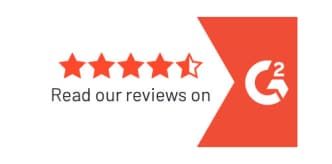The SECURE 2.0 Act, enacted in late 2022, introduced dozens of updates to modernize the retirement savings system. While many provisions focus on expanding access and flexibility, one change in particular has drawn significant attention: the upcoming Roth catch-up requirement. This provision alters how older, higher-earning workers can contribute to their employer-sponsored retirement plans, with important implications for both plan design and participant tax treatment.
What Are Catch-Up Contributions?
Catch-up contributions allow individuals aged 50 or older to contribute more to their 401(k), 403(b), or governmental 457(b) plans than the standard annual limit. The provision was created to help those nearing retirement accelerate their savings in their final working years.
For example, in 2025 the standard 401(k) contribution limit is $23,000, while those age 50 and above may contribute an additional $7,500 as a catch-up. Historically, these catch-up contributions could be made either on a pre-tax basis (reducing taxable income today) or on a Roth basis (taxed now, but growing tax-free for retirement), depending on what the employer’s plan allowed.
The Upcoming Change
Beginning in 2026, the SECURE 2.0 Act will require that all catch-up contributions made by employees earning more than $145,000 in wages from their employer (indexed annually for inflation) be made as Roth contributions. This effectively removes the pre-tax option for catch-ups among high earners.
Under the new rule, affected individuals will still be able to make the same dollar amount of catch-up contributions, but those contributions must come from after-tax income. In turn, qualified withdrawals from those Roth contributions—including investment growth—will be tax-free in retirement.
This provision was initially scheduled to take effect in 2024, but its implementation was delayed until 2026 to give employers, plan sponsors, and recordkeepers additional time to update systems and plan documents.
The Rationale Behind the Rule
The Roth catch-up requirement reflects a broader policy trend toward Rothification—that is, shifting more retirement savings into after-tax accounts. From a policy standpoint, this change provides the government with short-term tax revenue while still supporting long-term retirement savings incentives.
It also aligns with a growing emphasis on tax diversification, encouraging workers to build retirement assets across both pre-tax and after-tax accounts. This diversification can help retirees manage their tax exposure more strategically, since Roth assets can be withdrawn tax-free and are not subject to required minimum distributions (RMDs) during the owner’s lifetime.
Implications for Employers and Plan Sponsors
For employers and plan sponsors, this rule introduces several administrative challenges. Plans that currently do not offer a Roth contribution feature will need to be amended to include one, or they will be unable to accept catch-up contributions from high earners at all. Payroll and recordkeeping systems must also be updated to track employee compensation levels and correctly route eligible contributions to the Roth source.
Because these changes affect payroll withholding, data reporting, and participant communication, coordination among HR, payroll, and recordkeeping teams will be essential. Early communication to plan participants will also help minimize confusion when the new rule takes effect.
Implications for Retirement Savers
Although this change removes a popular pre-tax benefit for higher earners, it may enhance long-term retirement outcomes for some participants. By converting catch-ups to Roth contributions, high-income earners gain a source of tax-free income in retirement, which can help balance future tax obligations and provide flexibility in withdrawal planning.
Participants with incomes below the $145,000 threshold will retain the ability to choose between pre-tax and Roth catch-ups, depending on their plan’s design and their personal financial strategy.
Preparing for 2026
As the 2026 effective date approaches, attention is turning to implementation readiness. Employers will need to confirm that plan documents, payroll systems, and employee communications are updated to reflect the new rules. Meanwhile, financial professionals and plan administrators are evaluating how the Roth requirement may affect participation rates, contribution behavior, and overall plan dynamics.
401GO is prepared to support Roth catch-up contributions. Since 401GO plans already include Roth provisions, no amendments are necessary.
While the Roth catch-up rule represents just one of many SECURE 2.0 provisions, it underscores the evolving nature of retirement policy—shifting gradually toward greater flexibility, broader access, and a more balanced approach to taxation over the retirement life cycle.



